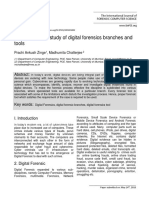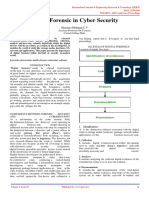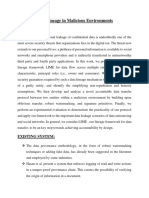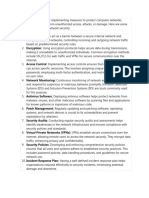0% found this document useful (0 votes)
61 views11 pagesUnit - 1 - Intro To DF
The document provides an overview of digital forensics, detailing its significance, processes, and various types, including computer, mobile, and cloud forensics. It outlines the stages involved in digital forensics, such as identification, collection, examination, analysis, and presentation of digital evidence, emphasizing the importance of maintaining evidence integrity. Additionally, it discusses challenges faced in digital forensics, such as the rapid evolution of technology and the complexity of data management.
Uploaded by
hathimaadil786Copyright
© © All Rights Reserved
We take content rights seriously. If you suspect this is your content, claim it here.
Available Formats
Download as PDF, TXT or read online on Scribd
0% found this document useful (0 votes)
61 views11 pagesUnit - 1 - Intro To DF
The document provides an overview of digital forensics, detailing its significance, processes, and various types, including computer, mobile, and cloud forensics. It outlines the stages involved in digital forensics, such as identification, collection, examination, analysis, and presentation of digital evidence, emphasizing the importance of maintaining evidence integrity. Additionally, it discusses challenges faced in digital forensics, such as the rapid evolution of technology and the complexity of data management.
Uploaded by
hathimaadil786Copyright
© © All Rights Reserved
We take content rights seriously. If you suspect this is your content, claim it here.
Available Formats
Download as PDF, TXT or read online on Scribd
/ 11






















































































